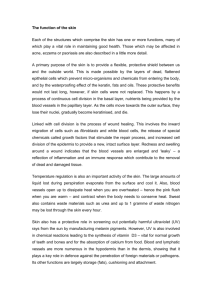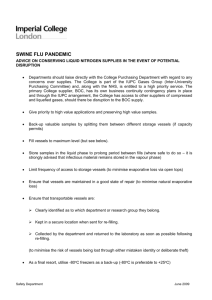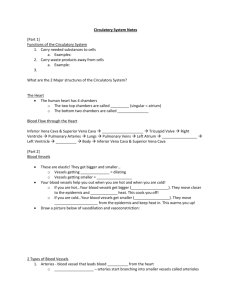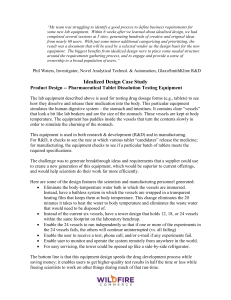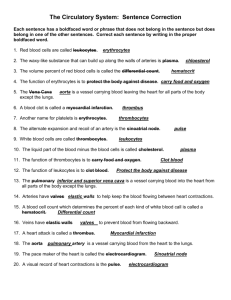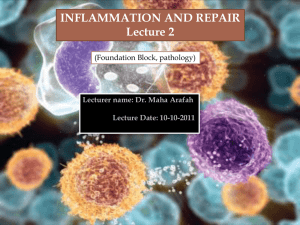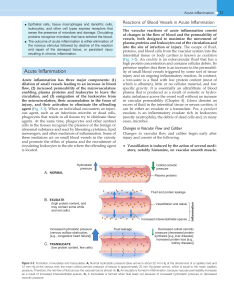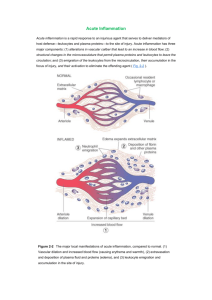Leukocyte rolling
advertisement
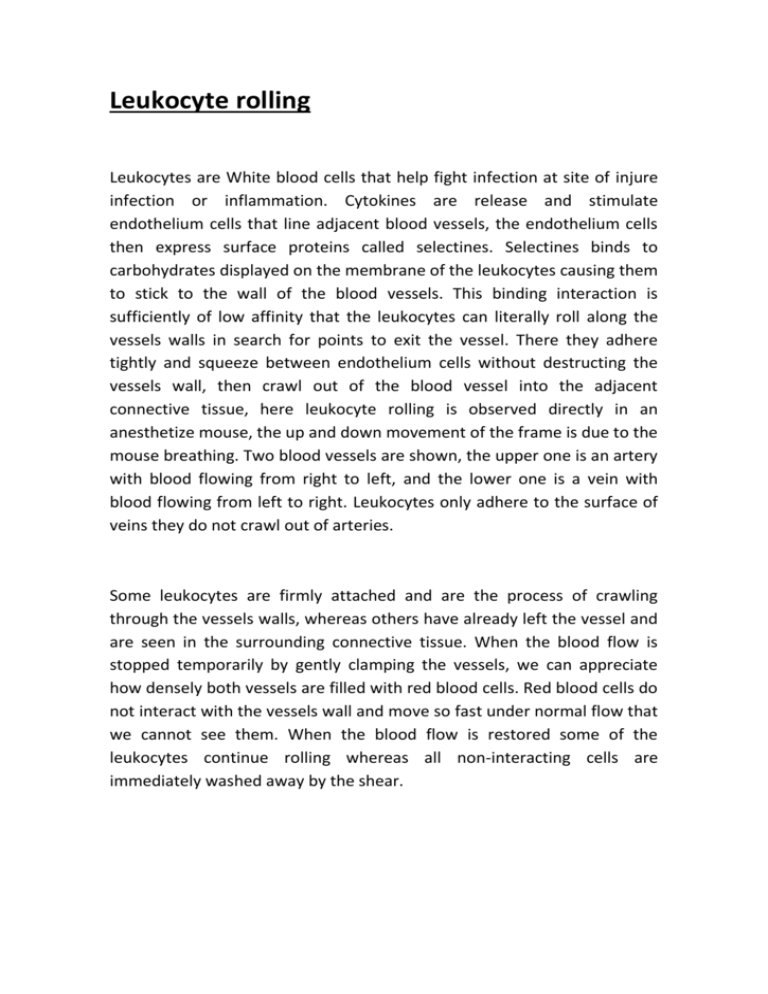
Leukocyte rolling Leukocytes are White blood cells that help fight infection at site of injure infection or inflammation. Cytokines are release and stimulate endothelium cells that line adjacent blood vessels, the endothelium cells then express surface proteins called selectines. Selectines binds to carbohydrates displayed on the membrane of the leukocytes causing them to stick to the wall of the blood vessels. This binding interaction is sufficiently of low affinity that the leukocytes can literally roll along the vessels walls in search for points to exit the vessel. There they adhere tightly and squeeze between endothelium cells without destructing the vessels wall, then crawl out of the blood vessel into the adjacent connective tissue, here leukocyte rolling is observed directly in an anesthetize mouse, the up and down movement of the frame is due to the mouse breathing. Two blood vessels are shown, the upper one is an artery with blood flowing from right to left, and the lower one is a vein with blood flowing from left to right. Leukocytes only adhere to the surface of veins they do not crawl out of arteries. Some leukocytes are firmly attached and are the process of crawling through the vessels walls, whereas others have already left the vessel and are seen in the surrounding connective tissue. When the blood flow is stopped temporarily by gently clamping the vessels, we can appreciate how densely both vessels are filled with red blood cells. Red blood cells do not interact with the vessels wall and move so fast under normal flow that we cannot see them. When the blood flow is restored some of the leukocytes continue rolling whereas all non-interacting cells are immediately washed away by the shear.



